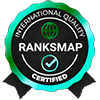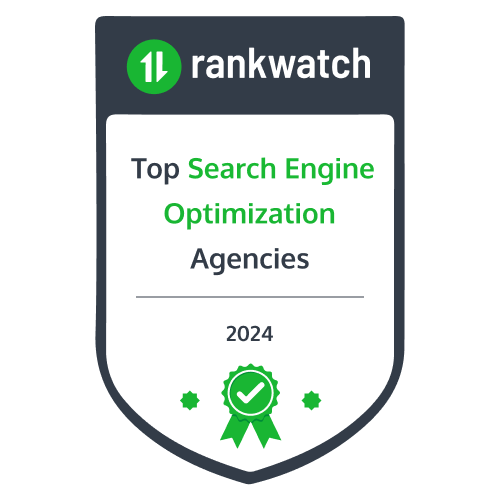
Content marketing, yaar! Not just a fancy term anymore, but absolutely essential for any e-commerce business that wants to survive in this cutthroat online market. The competition is huge. HUGE! And everyone is fighting for the same eyeballs. I have been working in this field for 8+ years now, and believe me when I say that I have never seen such fierce competition before.
In this case study, I will walk you through how our team completely transformed the online presence of Homely Delights, a mid-sized e-commerce platform specializing in home decor and kitchenware products. From a struggling website with minimal organic traffic to a powerhouse that generates consistent revenue through organic search, their journey offers invaluable insights for businesses of all sizes.
The beauty of this transformation lies not in some magic trick or shortcut. No, no! It was achieved through smart, strategic content marketing tightly integrated with SEO best practices. And the results? Simply mind-blowing!
Background: The Client’s Struggle
Homely Delights started as a small offline store in Mumbai in 2018. By early 2022, they had expanded to an e-commerce platform, hoping to tap into the growing online market for home goods. But things were not going as planned. Not at all.
When they approached our agency, their situation was quite grim:
- Monthly organic traffic: Barely 4,500 visitors
- Keyword rankings: Only 115 keywords on page 1 of Google
- Conversion rate from organic traffic: A measly 0.8%
- Revenue from organic search: Just ₹1.2 lakhs per month
Their website was technically sound, but content? Practically non-existent beyond basic product descriptions copied straight from manufacturers. The blog section was gathering digital dust with only 5 generic posts published over six months. Whenever someone serious as in someone who has studied SEO as part of a digital marketing program does SEO on a site, he is careful to create great content.
“We know we need to do something about our content, but we don’t know where to start,” admitted Anjali, their Marketing Director, during our first meeting. “Our competitors seem to be everywhere in search results, while we’re invisible!”
Our Approach: Comprehensive Content Strategy
After conducting a thorough analysis, we identified several critical issues:
- Zero content hierarchy: No topic clusters, no pillar content, nothing!
- Weak product descriptions: Generic content that didn’t address customer pain points
- Non-existent blog strategy: Random topics with no connection to customer journey
- Missing long-tail keyword opportunities: Focusing only on high-competition terms
- No local SEO implementation: Despite having physical stores in three cities
We developed a 12-month content marketing roadmap focusing on three key areas:
1. Product Content Enhancement
First things first, we completely revamped their product descriptions. Each product needed its unique voice, addressing specific customer needs. We created a structured template that included:
- Benefit-focused headlines
- Problem-solution narrative
- Specifications in scannable bullet points
- Usage scenarios
- FAQs based on customer service inquiries
For example, a simple “Stainless Steel Pressure Cooker” went from this generic description:
“High-quality pressure cooker made of stainless steel. 5-liter capacity. Durable and easy to clean.”
To this comprehensive content:
“5L WhisperCook Pressure Cooker: Your Kitchen’s Time-Saving Champion
Tired of spending hours in the kitchen after a long workday? This premium 5-liter pressure cooker cuts your cooking time by up to 70%! Perfect for preparing dal, rice, and meat dishes for a family of 4-6 members in minutes, not hours.
The medical-grade stainless steel construction ensures your food remains free from harmful chemicals while the ergonomic heat-resistant handles protect your hands during serving. Our patented safety lock system with five protective mechanisms makes pressure cooking worry-free even for beginners.
Key Features:
- 5L capacity ideal for Indian family cooking
- 5-layer safety mechanism (ISI certified)
- Induction compatible base
- Dishwasher safe components
- 5-year warranty
Pro Tip: Use the included measuring guide to prevent overfilling and achieve perfect results every time.
Common Questions: How is this different from regular cookers? The WhisperCook uses innovative pressure regulation technology that reduces noise by 40% compared to standard pressure cookers…”
This transformation happened across their 350+ products over three months. Exhausting work, but absolutely worth it!
2. Content Cluster Implementation
We mapped their entire product range into logical content clusters, creating comprehensive pillar content for each category. Each cluster followed this structure:
- Pillar page (comprehensive guide on the product category)
- Supporting content (addressing specific questions, comparisons, usage guides)
- Product pages (enhanced with unique descriptions)
- User-generated content sections (reviews, user photos, Q&A)
For example, the “Kitchen Appliances” section was restructured into:
Pillar Content: “The Complete Guide to Modern Indian Kitchen Appliances”
Supporting Content:
- “How to Choose the Right Pressure Cooker for Indian Cooking”
- “Gas vs. Induction Cooktops: What’s Best for Your Kitchen?”
- “10 Essential Kitchen Gadgets Every Indian Home Needs”
- “Energy-Efficient Appliances: Save Money While Cooking”
- “Kitchen Appliance Maintenance Tips for Longevity”
Each piece of supporting content naturally linked to relevant product pages and other related articles, creating a robust internal linking structure. This wasn’t just about SEO; it genuinely guided customers through their buying journey!
3. Local + National Content Strategy
We implemented a dual approach targeting both national audiences and location-specific searches:
National Content:
- Trending kitchen design concepts
- Seasonal home decor guides
- Indian festival-specific decor ideas
- Product comparison guides
- Care and maintenance guides
Local Content:
- City-specific home decor trends
- “Mumbai Homes: Space-Saving Solutions” (targeting the space constraints typical in Mumbai apartments)
- “Delhi’s Air Quality: Home Products That Help”
- “Bangalore Weather: Kitchen Products for Changing Seasons”
- Location-based buying guides with store information
Implementation Challenges (The Real Story!)
Let me be honest here. The implementation was NOT a smooth journey. We faced numerous challenges:
Resource Constraints: The client initially allocated only one content writer for this massive project. After much convincing and showing ROI projections, they agreed to hire three freelance writers specialized in home decor content.
Internal Resistance: The product team was hesitant to change descriptions they were familiar with. We had to organize a workshop to demonstrate how enhanced content directly impacts conversion rates.
Balancing Speed with Quality: With 350+ products needing new descriptions, we had to develop a content production pipeline that maintained quality while meeting deadlines.
Technical Limitations: Their CMS had character limits for product descriptions! We had to work with their development team to modify the database structure to accommodate comprehensive content.
These challenges tested our patience, but you know what they say – “Difficulties are just opportunities in disguise.” And how true that proved to be!
SEO Implementation: Beyond Just Content
Content alone isn’t enough. We integrated several technical SEO elements:
- Schema Markup Implementation: We added structured data for products, including price, availability, reviews, and FAQs, which significantly improved rich snippet appearances.
- Image Optimization: Every product image was compressed, renamed with keyword-rich filenames, and given descriptive alt text. This improved image search visibility tremendously.
- Page Speed Optimization: Content was structured for optimal loading, with critical information appearing first and less important details loading later.
- Mobile Content Adaptation: Content was specially formatted for mobile users, with shorter paragraphs and more visual breaks to improve readability on smaller screens.
- Internal Linking Strategy: We created a comprehensive internal linking plan, ensuring each piece of content connected to relevant products and related information.
Results: The Spectacular Transformation
After 12 months of consistent implementation, the results exceeded even our optimistic projections:
- Organic Traffic: Increased from 4,500 to 63,000 monthly visitors (1,300% growth!)
- Keyword Rankings: From 115 to 2,800+ keywords on page 1 of Google
- Organic Conversion Rate: Improved from 0.8% to 3.2% (300% increase)
- Revenue from Organic Search: From ₹1.2 lakhs to ₹18.5 lakhs monthly (1,442% growth!)
- Average Time on Site: Increased from 1:45 minutes to 4:12 minutes
But the most impressive result was the decrease in PPC spending. With stronger organic performance, Homely Delights reduced their Google Ads budget by 40% while maintaining the same overall traffic and conversion levels. This resulted in an additional ₹4.2 lakhs in monthly savings!
Content Performance Breakdown
Not all content performed equally. Here’s the breakdown of what worked best:
Highest Converting Content:
- Buyer’s guides (4.7% conversion rate)
- Product comparison articles (4.2% conversion rate)
- Problem-solution content (3.8% conversion rate)
Highest Traffic Content:
- Seasonal decor guides
- Festival decoration ideas
- Space-saving solutions for small homes
Most Shared Content:
- Festival decoration photo galleries
- Before/after home transformation stories
- Celebrity home decor inspiration pieces
Key Strategies That Made the Difference
Looking back, several specific strategies proved particularly effective:
1. The Seasonal Content Calendar
We created a 12-month content calendar aligned with Indian festivals and seasons. This anticipatory approach meant content was published 45-60 days before each seasonal peak, giving it time to gain search authority.
For example, Diwali-related content was published in August, even though Diwali was in October. This gave search engines ample time to index and rank the content before search volumes peaked.
The calendar included:
- January: Winter home comfort guides
- February: Valentine’s Day home date night setups
- March: Holi color themes for home decor
- April: Summer cooling solutions
- May: Monsoon preparation guides
- August: Diwali preparation content
- October: Wedding season home gifts guide
- December: Christmas and New Year entertaining guides
2. User-Generated Content Integration
We implemented a review incentive program, offering small discounts for customers who provided detailed product reviews with photos. These authentic reviews were integrated into product pages and repurposed as social proof throughout the buying journey.
The results were incredible! Pages with 10+ user reviews converted at 4.5% compared to 2.1% for pages with fewer reviews.
3. Question-Based Content Strategy
We leveraged data from customer service inquiries, search console, and question-research tools to identify exact questions potential customers were asking. Each question became a H2 or H3 heading within our content, with comprehensive answers provided.
This approach dramatically improved featured snippet acquisition. Within 12 months, Homely Delights secured 125+ featured snippets for high-intent keywords.
4. Localization Strategy
Beyond just creating city-specific content, we implemented:
- Store inventory integration (showing which products were available in which physical locations)
- Local delivery time estimators
- City-specific promotions and landing pages
- Regional language product descriptions for key products (Hindi, Tamil, Bengali)
The localized pages saw 32% higher conversion rates than generic pages for visitors from those regions.
Lessons Learned: The Brutally Honest Takeaways
While the results were fantastic, we learned several crucial lessons along the way:
- Content velocity matters, but consistency matters more. Publishing 5 high-quality articles monthly proved more effective than erratic publishing of 15 articles one month and none the next.
- Not all products deserve equal content investment. We prioritized top-selling categories and products that generated the highest margins, which optimized our content creation resources.
- Technical limitations can derail content strategies. We should have conducted a more thorough technical audit before creating detailed content plans.
- Client education is critical. We spent significant time educating the client team on content marketing principles, which ultimately led to better collaboration and results.
- Measuring too many metrics creates confusion. We initially tracked 27 different metrics but eventually narrowed down to 7 key performance indicators that truly mattered for business impact.
Comparative Analysis with Competitors
To provide context for this transformation, we analyzed three direct competitors during the same period:
| Competitor | Traffic Growth | Keywords (Page 1) | Conversion Rate |
| Homely Delights | 1,300% | 2,800+ | 3.2% |
| Competitor A | 22% | 1,450 | 1.8% |
| Competitor B | 34% | 2,100 | 2.1% |
| Competitor C | -3% | 890 | 1.5% |
Our strategy didn’t just improve Homely Delights’ performance; it helped them leapfrog established competitors who had been in the market for years longer!
The Client’s Perspective
“When the agency proposed their content strategy, I thought they were being overly optimistic,” admits Anjali, Marketing Director at Homely Delights. “The proposed investment seemed significant for ‘just content.’ But seeing the ROI now, my only regret is not starting sooner. The content hasn’t just improved our SEO; it’s reduced our customer service inquiries by 40% as customers now find answers within our content.”
Sanjay, the CEO, adds: “The content strategy has transformed how we think about our online presence. It’s not just about selling products anymore; we’re building a knowledge hub for home decor and kitchenware that positions us as authorities in our space. This authoritative position has opened partnership opportunities with premium brands that previously wouldn’t consider us.”
Actionable Takeaways for Other E-commerce Businesses
If you’re running an e-commerce business and want to replicate similar results, here are concrete steps to take:
- Conduct a content audit immediately. Identify content gaps in your customer journey and prioritize filling the highest-impact gaps first.
- Create distinctive product descriptions. Stop using manufacturer descriptions! Develop a unique voice that speaks directly to your target audience’s needs and pain points.
- Implement a cluster model for your content. Organize topics into pillar and supporting content that guides customers through their buying journey.
- Leverage customer questions. Your customer service team is sitting on a goldmine of content ideas based on real questions from potential buyers.
- Prioritize seasonal content well in advance. Don’t wait until the season arrives; plan and publish 45-60 days ahead of seasonal trends.
- Invest in visual content. Our image-rich guides outperformed text-only content by 72% in engagement metrics.
- Create content for each stage of the buying journey. Don’t focus solely on bottom-funnel conversion content; build awareness and consideration content as well.
- Monitor performance and adapt. Set up monthly content performance reviews and be willing to pivot when data shows certain approaches aren’t working.
Conclusion: Content as a Business Asset, Not an Expense
The Homely Delights case proves that content should be viewed as a strategic business asset rather than a marketing expense. When properly executed, content marketing doesn’t just drive SEO results; it builds brand authority, reduces customer service costs, increases average order value, and creates a competitive moat that’s difficult for competitors to overcome.
The most powerful insight from this case study is how properly structured content serves multiple business objectives simultaneously. The same buyer’s guide that improves SEO also educates customers, reduces return rates, increases average order values, and provides material for email marketing and social media campaigns.
For Homely Delights, what started as an SEO-focused content initiative has evolved into the central pillar of their entire marketing strategy. Content now influences product development, customer service training, and even in-store merchandising decisions.
In the words of Homely Delights’ CEO: “We no longer see ourselves as just a product company; we’re a content company that happens to sell products.” And that mindset shift has made all the difference.
Three years ago, I would have never imagined that content could transform an e-commerce business so dramatically. But the evidence is clear. In today’s digital marketplace, content isn’t just king—it’s the entire kingdom!




